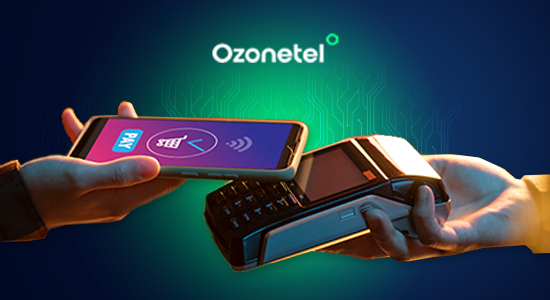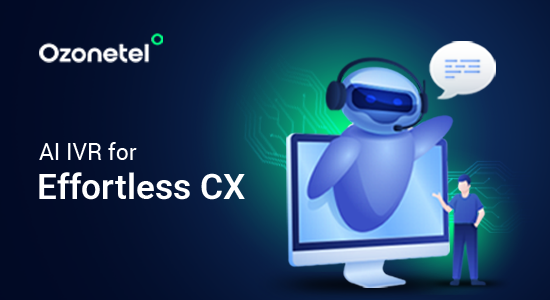- Resources
- Voice Analytics: How it Works, Benefits & Best Practices
Voice Analytics: How it Works, Benefits & Best Practices

Initially, voice analytics focused on converting speech to text, but advancements in technology now allow it to analyze emotions, detect intent, and even identify key patterns in conversations. In fact, the global speech analytics market is expected to grow from $1.7 billion to $4.9 billion by 2031, reflecting the growing importance of this technology.
With the integration of conversation intelligence, large language models, and machine learning, voice analytics has evolved into a powerful tool for automating the analysis of customer interactions, turning unstructured data into valuable insights.
In this article, we will explore:
- 1.What Is Voice Analytics?
- 2. The Technology Behind Voice Analytics: How It Works
- 3. How Voice Analytics Is Different From Speech Analytics
- 4.Best Practices for Successful Voice Analytics Implementation
- 5.The Future of Voice Analytics: Trends and Innovations
- 6.How Ozonetel Helps Boost Voice Analytics
What Is Voice Analytics?
Voice analytics is the process of analyzing audio data from conversations, such as customer calls, to extract meaningful insights. It works by converting speech into text (using Automatic Speech Recognition) and then analyzing that text to understand context, emotions, and key information
The Technology Behind Voice Analytics: How It Works
Before we get into the behind-the-scenes of voice analytics, we need to understand the different technologies that form the base of this. These include:
- Automatic Speech Recognition (ASR): Converts spoken language into text by analyzing speech patterns.
- Text-to-Speech (TTS): Converts written text into speech, enabling automated vocal responses.
- Natural Language Processing (NLP): Analyzes and understands the meaning, structure, and context of language in customer conversations.
- Sentiment Analysis: Evaluates the tone, pitch, and speed of speech to detect emotions like frustration or satisfaction.
- Voice Biometrics: Verifies identity using unique voice patterns for added security.
- API and SDK Integration: Allows seamless connection of voice analytics with existing systems like CRM or ERP for efficient data flow.
- To understand this working in a better way, let’s use an example. A customer calls a bank’s support center, frustrated about an unauthorized transaction. Using ASR, the system transcribes the customer’s words into text.
Then, NLP processes the sentence to identify the key issue, and sentiment analysis detects frustration in the customer’s tone. Throughout the conversation, the system continues analyzing the speaker’s emotional tone, helping the agent adjust their approach accordingly to calm the customer down.
How Voice Analytics Is Different From Speech Analytics
While both voice and speech analytics deal with analyzing audio data, they focus on different aspects of the conversation. Here are the key differences between the two:
| Aspect | Voice Analytics | Speech Analytics |
|---|---|---|
| Primary Focus | Analyzing the emotional tone, sentiment, and intent of the speaker | Monitoring, transcribing, and extracting data from spoken words |
| Key Capabilities |
|
|
| Data Processing | Focuses on emotional cues and voice inflections | Focuses on transcribing and analyzing the content of the conversation |
| Technology Involved | Advanced AI systems that interpret emotional tone and voice patterns | Natural Language Processing (NLP) for text analysis and transcription |
| Benefits | Provides deeper customer insights, leading to more personalized interactions | Helps track performance metrics, compliance, and operational efficiency |
Basically, voice analytics centers on emotional intelligence, while speech analytics focuses more on the content of the conversation.
Best Practices for Successful Voice Analytics Implementation
From these benefits, it’s clear that adopting this technology can significantly improve customer experiences, streamline operations, and enhance decision-making. To maximize these advantages, here are some best practices that will ensure a smooth and effective integration of voice analytics into your operations:
Integrate Voice Analytics with User-Centric Features

Purina’s “Ask Purina” Alexa Skill provides a valuable service for dog owners and those looking to adopt a pet. It goes beyond promoting products by offering useful information on dog breeds, addressing real-life questions like which breeds are good with children or require little shedding. This shows how Purina uses voice technology to position itself as a trusted resource in the pet care space.
How you can do it too:
- Identify common pain points or needs within your target audience. Ask yourself what questions your customers often have and how voice analytics can provide immediate, relevant answers.
- Ensure that your voice analytics solution isn’t just focused on selling your products/services but also offers true value by helping users solve problems or make informed decisions.
- Build interactive and engaging experiences that make it easy for users to access the information they need without friction.
Test New Technologies Gradually
Starbucks started with mobile app ordering and then incorporated voice functionality into its app. They first ensured that the app’s ordering system was well-received before expanding to voice ordering through Alexa and Bixby. This strategy allowed them to gauge customer response before making the system more complex.
How you can do it too:
- Introduce voice analytics in stages, beginning with basic features and progressively adding more as you understand how your audience responds.
- Use a test group or pilot phase to recognise pain points and make necessary adjustments before a full launch.
- Prioritize user feedback and make improvements based on real customer experience rather than assumptions.
Make the Process Seamless and Convenient
Kayak’s Alexa skill offers travelers a simple voice interface for booking flights, hotels, and renting cars. It eliminates the need to search through multiple platforms, streamlining the booking process. By integrating Echo Show, Kayak also enhances the user experience with visual aids that complement voice commands.
How you can do it too:
- Focus on minimizing the steps required for users to complete their tasks. The goal is to make the voice interaction as smooth and quick as possible.
- Consider adding a visual component to the voice interaction (e.g., a screen display) to provide more context and support.
- Make it easy for users to access important information and perform actions they would typically do on other platforms or apps.
Leverage Voice Analytics for Personalized Interactions
Bank of America’s voice assistant, Erica, offers personalized financial advice, sends reminders about bills, and tracks spending. The assistant uses voice analytics to respond to customer inquiries, making banking more accessible and less reliant on traditional customer support.
How you can do it too:
- Use voice analytics to gather data on customer interactions and personalize the experience based on their needs and preferences.
- Build your voice assistant to handle specific tasks or answer questions relevant to your business, whether that’s managing accounts, tracking progress, or providing advice.
- Ensure that the assistant can learn and adapt over time, improving its responses based on customer behavior and history.
Implement Voice for Accessibility and Convenience

Hyundai integrated voice technology into its cars with the Venue SUV, enabling drivers to use voice commands for tasks like controlling navigation, media, and making phone calls. The car also supports multiple languages, making the technology more inclusive and accessible.
How you can do it too:
- Ensure that your voice analytics solution is easy to use for all customers, including those who may have difficulty using traditional interfaces.
- Make sure your voice assistant can understand a variety of accents or languages, expanding accessibility to a wider audience.
- Offer real-time assistance and easy control of multiple functions, improving the overall user experience and accessibility of your service or product.
Innovate with Voice Analytics for New Customer Experiences

Nike’s voice-activated Adapt Huarache sneakers allow wearers to adjust the shoe’s fit without needing to stop and do it themselves physically. This voice feature adds a layer of convenience and innovation to a commonly overlooked aspect of the customer experience.
How you can do it too:
- Look for unique ways to apply voice analytics to everyday actions and interactions in your industry. Think beyond traditional uses and consider how voice could improve the convenience or functionality of your product.
- Experiment with adding voice functionality to physical products or services that would otherwise require manual input.
- Think about how your customers could benefit from hands-free control, making everyday tasks simpler and more efficient.
The Future of Voice Analytics: Trends and Innovations
As more companies integrate voice analytics into their operations, several key trends are emerging that will shape the future of this technology. Here’s a look at what’s ahead in the coming years:
Emotionally Intelligent AI
Emotionally intelligent AI systems can recognize emotions in a customer’s voice, text, or even facial expressions. By understanding how a customer feels, AI can respond in a more empathetic way. For example, if a customer sounds frustrated, the system can suggest a response that helps calm the situation. This approach is especially useful in customer service, as it can improve satisfaction and build loyalty.
Ethical Considerations and AI Governance
As voice analytics and AI become more common, companies will need to handle sensitive data responsibly, ensuring that customer privacy is respected. This means avoiding biases in AI algorithms and being transparent about how customer data is used. Organizations must establish clear guidelines to make sure their AI systems are fair and ethical.
Process Automation
Voice analytics will increasingly work alongside automation systems to handle tasks such as quality management, agent training, and report generation. This will help reduce the time spent on repetitive tasks, allowing employees to prioritize more important activities. For example, automated systems could monitor calls in real-time, flagging areas where agents need additional training, thus speeding up performance improvement.
Big Data and Predictive Analytics
With access to a huge amount of conversational data, companies will be able to identify patterns and predict future behaviors. For instance, analyzing past customer calls could help businesses anticipate future issues and provide more personalized service. This predictive ability can drive customer satisfaction and loyalty by addressing concerns before they arise.
Broader Use Cases Across Industries
Voice analytics will expand beyond customer service, reaching areas like marketing and product development. By analyzing call data, businesses will better understand customer needs and pain points, helping to develop more effective marketing strategies or create products that better align with customer expectations.
How Ozonetel Helps Boost Voice Analytics
Ozonetel’s advanced voice analytics solution offers a comprehensive suite of features that help businesses improve call quality, agent performance, and customer experience. This powerful solution combines speech analytics and sentiment analysis to provide actionable insights into every conversation, driving meaningful improvements.
Some key features of Ozonetel include:
- 100% Call Quality Monitoring: Monitor every call and chat, tracking over 30 different parameters, ensuring no conversation is missed, unlike traditional Quality Assurance (QA), which only checks a small sample.
- Granular Insights into Conversations: Get deep insights into customer sentiment, intent, and emotional tone. This allows you to see exactly how customers are feeling, understand the root cause of their issues, and make the necessary changes to improve their experience.
- Actionable Data: Easily sort and analyze call data based on sentiment, agent, or intent. This lets you pinpoint areas where improvement is needed, whether it’s agent performance or customer satisfaction.
- Automated Reports: Save time by automatically generating reports on key metrics like speaking rate, call interruptions, and call-vs-listen ratios. This helps you stay on top of your call center’s performance without the need for manual tracking.
- Empathetic Agent Training: Our system highlights agent training needs by analyzing performance in real time, leading to faster improvements in agent skills and customer handling.
Case Study
National Health Authority (NHA) partnered with Ozonetel’s voice analytics as part of their work with PM-JAY. This allowed them to automate the monitoring of over 122,000 hours of conversations with their 900 remote healthcare advisors.
How? This solution helped identify specific training needs, track agent performance, and significantly improve the quality of conversations with beneficiaries. Using sentiment analysis, Ozonetel was able to predict beneficiary concerns, leading to more tailored training programs and better first-contact resolution. As a result, the NHA saw improvements in both advisor performance and overall citizen satisfaction.
CSAT vs DSAT
When it comes to measuring customer experience, CSAT (Customer Satisfaction) and DSAT are two key metrics you need to understand. But how do they differ, and why should you care?
| Metric | CSAT (Customer Satisfaction Score) | DSAT (Dissatisfaction Score) |
|---|---|---|
| Focus | Measures customer satisfaction | Measures customer dissatisfaction |
| Scale | Typically 1 to 5 rating, with 4 or 5 indicating satisfaction | Typically 1 to 5 rating, with 1 or 2 indicating dissatisfaction |
| Purpose | Shows overall satisfaction and how well products or services meet customer expectations | Highlights areas where customers are unhappy or dissatisfied |
| Outcome | Higher scores indicate satisfaction | Higher scores indicate dissatisfaction (undesirable) |
| Use Case | Used to track general customer happiness | Used to pinpoint areas needing improvement and to reduce churn |
| Actionable Insights | Provides general feedback on what works well | Provides specific feedback on what needs fixing or improving |
| Example | A customer gives a 4 or 5 after a support interaction | A customer gives a 1 or 2, showing frustration or poor service |
| Customer Impact | Indicates customer loyalty and positive experience | Signals potential customer churn and negative feedback |
Tools to Monitor and Implement DSAT
Some tools that will help you identify areas of improvement and analyze customer sentiment are:
Speech Analytics
Speech analytics tools help contact centers get deep insights from customer conversations by analyzing tone, sentiment, and key phrases. These tools can identify recurring issues, assess agent performance, and understand customer emotions. For instance, Ozonetel’s Speech Analytics solution automates the analysis of every call and chat, enabling 100% quality assurance.
Live Monitoring Dashboard
Live monitoring dashboards provide real-time visibility into call center operations, helping managers track performance, identify issues, and take immediate corrective actions. And Ozonetel’s Live Monitoring Dashboard goes a step further by offering 100+ live reports and AI-driven insights which allow managers to monitor calls, track agent performance, and analyze sentiment in real time.
AI-powered Voice and Chatbots
AI-driven voice and chatbots help automate customer interactions, providing instant responses and improving operational efficiency. These tools use natural language processing (NLP) to understand and respond to customer queries in a human-like manner. Similarly, Ozonetel’s AI-powered voice and chat bots offer smart real-time assistance to both agents and customers.
Omnichannel Support
Omnichannel support tools allow businesses to engage customers across multiple touchpoints, from phone and email to chat and social media. These platforms help ensure consistent service, regardless of the communication channel. For instance, Ozonetel’s Omnichannel feature ensures a seamless, consistent experience for customers across all channels.
How Ozonetel Solutions Helps
Ozonetel helps businesses lower their DSAT scores with its unified CX platform. Thousands of businesses rely on Ozonetel’s powerful suite of features to deliver seamless experiences to customers at every stage of their journey. — Don’t believe us? Here are a few real-world examples where Ozonetel’s solutions made a significant impact.
PM-JAY: Improving Citizen Satisfaction with AI-based Sentiment Analysis
How do you handle a high volume of customer interactions while ensuring top-notch service? For PM-JAY, a government health initiative, the answer lay in Ozonetel’s AI-powered sentiment analysis.
This solution boosted First Call Resolution (FCR) rates and helped improve citizen satisfaction. By analyzing callers’ emotional tone, the system provided agents with the insights needed to respond quickly and accurately.
As a result, PM-JAY was able to address healthcare queries more effectively, leading to higher citizen engagement and satisfaction.
Read the full case study here!
Stockbroking Firm: Tackling High Volume with a Robust CX Platform
How do you manage rising customer queries without compromising quality? Ozonetel helped a leading stockbroking firm tackle this challenge by providing a robust customer experience (CX) platform.
With seamless integrations and intelligent IVR, the firm could route calls efficiently, reduce wait times, and offer quicker resolutions. The result? Improved operational efficiency and a more responsive, satisfying experience for their clients.
Read the full case study here!
Healthcare: Boosting Trust and Conversions Through Omnichannel Engagement
A leading health tech brand in India improved patient engagement by providing personalized communication and consistent points of contact across multiple channels like calls, WhatsApp, and more.
The result? A 36% increase in customer satisfaction (CSAT) and 54% higher conversions. By assigning a dedicated representative to each patient, the company built trust and made interactions more meaningful.
The integration of omnichannel tools enabled a seamless patient journey, with 100% compliance with patient confidentiality.
Read the full case study here!
ACKO: Accelerating Policy Resolution with a Smart Self-Service IVR
ACKO, a digital-first insurance company, improved customer satisfaction with a self-service IVR solution that reduced time spent in the IVR by 20% and sped up resolution times by 50%. With 90% CSAT, the solution allowed customers to handle claims, renewals, and policy updates without needing agent intervention.
Moreover, advanced routing and CRM integrations helped direct queries to the right teams, enhancing efficiency and driving 20% higher routing accuracy. This led to 3,000 successful self-service resolutions per month and a frictionless customer experience, setting ACKO apart in the insurance industry.
Conclusion
Incorporating voice analytics into your contact center can provide you with various insights and enhance both customer satisfaction and operational efficiency. As you explore its potential, remember that successful implementation requires a clear strategy, the right tools, and ongoing optimization.
Ozonetel’s voice analytics solutions can help streamline this process, providing real-time insights and enhancing customer service efficiency. With features like automatic sentiment analysis and advanced speech-to-text capabilities, Ozonetel enables businesses to make informed decisions quickly and easily.
Interested in seeing how voice analytics can benefit your business? Schedule a demo now
Want to see what Ozonetel can do for your company? Sign up today for a free 7-day trial.
Prashanth Kancherla
Chief Operating Officer, Ozonetel Communications
Over the past decade, Prashanth has worked with 3000+ customer experience and contact center leaders...
Chief Operating Officer, Ozonetel Communications
Over the past decade, Prashanth has worked with 3000+ customer experience and contact center leaders to comprehensively understand the need for effective and efficient customer communications at every step of their journey with a brand. Deeply embedded in today’s CCaaS ecosystem, he has been instrumental in Ozonetel's growth and contributed in various roles including product management, sales, and solution architecture.
Frequently Asked Questions
AI improves automation, decision-making, and personalization across various industries. It enables businesses to optimize processes, analyze vast amounts of data, and deliver more efficient and tailored solutions.
AI processes data collected by IoT devices, analyzes it in real time using cloud computing, and extracts insights through data analytics. This integration enables more responsive operations, better resource management, and smarter decision-making.
AI is a key technology that accelerates digital transformation by automating tasks and improving operational efficiency. It enables companies to adopt more intelligent, adaptive strategies that better meet customer needs and market demands.










